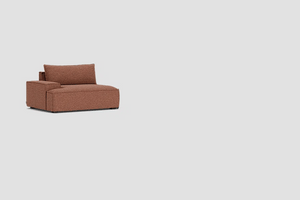
How to Clean Leather Sofa Stains: A Step-by-Step Guide to Maintain Your Furniture
Leather sofas add a touch of elegance to our living spaces, but they can be quite tricky to maintain. Stains are inevitable, whether it's from spilled coffee or muddy footprints. Knowing how to clean these stains properly not only keeps our sofas looking pristine but also extends their lifespan.
In this guide, we'll walk you through simple and effective methods to tackle common leather sofa stains. From everyday spills to more stubborn marks, we've got practical tips to help you restore your sofa to its former glory. Let's dive in and make our leather sofas look as good as new.
Understanding Leather Sofa Stains
Leather sofa stains can be tricky. From everyday spills to accidental marks, they can mar the beauty of our beloved furniture. Knowing the cause of the stain helps in choosing the right cleaning method.
- Water Stains: These come from spills or damp clothes. If not dried quickly, they leave marks.
- Grease Stains: Common in households with children or during meals on the sofa. These can penetrate leather, making them hard to remove.
- Ink Stains: Ink stains from pens or markers are notoriously difficult to clean. They require immediate attention.
- Dye Transfer: Jeans or colourful clothes can leave dye marks on light-coloured leather sofas.
- Food and Beverage Stains: Chocolate, coffee, and wine are typical culprits. They need specific cleaning techniques due to their composition.
Understanding these stains is vital for maintaining the sofa's look and lifespan. For instance, addressing a grease stain immediately is crucial as it can set into the leather. Knowing the stain type helps us apply targeted treatments, ensuring effective cleaning and preserving the sofa's appearance.
Preparing For The Cleaning Process
Before tackling leather sofa stains, it's crucial to prepare properly to ensure success.
Gathering Essential Supplies
First, assemble all necessary cleaning supplies. Essential items include a soft cloth, leather cleaner, mild soap, distilled water, and a vacuum with a soft brush attachment. You might also need a bowl for soapy water, paper towels, and cotton swabs. Always select products suitable for leather to avoid damage.
Testing The Cleaning Solution
Before applying any cleaner, test it on a hidden part of the sofa. Apply a small amount with a cloth and let it sit for a few minutes. This ensures the solution won’t discolour or damage the leather. If there’s no adverse reaction, proceed with confidence knowing the product is safe for your sofa.
Step-by-Step Cleaning Guide
We’re diving into the practical methods for leather sofa care. Knowing the right steps simplifies maintaining your sofa and keeps it looking great.
Removing Water-Based Stains
Removing water-based stains requires minimal supplies. Blot the stain gently with a soft cloth. Dab, don’t rub, to avoid spreading the stain. For tougher stains, use a mild soap solution with distilled water. Test the solution on an inconspicuous spot first. If safe, gently clean the area and blot dry with another soft cloth.
Tackling Oil-Based Stains
Oil can be tricky. Sprinkle talcum powder on the oil stain and let it sit for several hours. Talc absorbs oil. Use a soft brush to remove the powder. Repeat if needed. If residue remains, dab gently with a soft cloth dampened with distilled water.
Handling Persistent Stains
Persistent stains may need more effort. Mix a solution of water and white vinegar. Test on a hidden part of the sofa. If no damage, apply gently to the stain with a soft cloth. Rinse with distilled water and blot dry. For ink stains, use a cotton swab dipped in rubbing alcohol on the spot.
Buffing and Conditioning The Leather
Conditioning keeps leather soft and shiny. Use a leather conditioner, testing it first on a hidden area. Apply evenly with a soft cloth. Buff the leather in small circles after a few minutes to restore its shine. Regular conditioning prevents cracks and maintains suppleness.
Maintaining a leather sofa involves proper techniques and consistent care. Follow these steps to enjoy a pristine, long-lasting leather sofa.
Preventative Measures
Taking proactive steps helps maintain your leather sofa's longevity and appearance. Properly caring for your sofa prevents stains and extends its life. Below are some essential preventative measures.
Regular Maintenance Tips
Effective regular maintenance can be a game-changer for your leather sofa. Dust the surface weekly with a soft, dry cloth to prevent dust and grime build-up. For deeper cleaning, use a damp cloth once a month, but ensure the leather dries quickly to avoid water stains. It's crucial to rotate the cushions periodically; this ensures even wear and prevents indentations from forming. Keeping pets off the leather sofa reduces the risk of scratches and hair accumulation. If the couch is near a window, close the curtains during peak sunlight. Exposing leather to direct sunlight for prolonged periods causes fading and cracking.
Using Protective Products
Using the right protective products adds an additional layer of defence against stains. Leather conditioners are essential. Apply a conditioner every 6-12 months to keep the leather supple and moisturised. Choose a product specifically designed for your sofa's leather type. Leather protectors create a barrier against liquids and spills, making cleaning easier. Before applying any new product, test it on a small, inconspicuous area to ensure it doesn't discolour or damage the leather. Anti-static sprays help repel dust to keep your sofa looking fresh. Finally, placing a slipcover on your leather sofa is an excellent way to protect it from daily wear and accidental spills.
Common Mistakes to Avoid
When cleaning leather sofa stains, mistakes can damage your furniture. We’ve identified some common errors to help you maintain your sofa’s quality.
Using Harsh Chemicals
Never use harsh chemicals when cleaning leather. Household cleaners, including bleach and ammonia-based products, can strip the leather of its natural oils. These oils are vital for keeping the leather soft and supple. If you use these chemicals, you might find your sofa cracking and drying out. Always opt for cleaners specifically designed for leather or natural solutions like a mix of water and vinegar.
Skipping the Patch Test
Always do a patch test before applying any cleaner widely. Even products marketed for leather can react differently with various leather types. To avoid discolouration or damage, test a small hidden area first. If there’s no adverse reaction within 24 hours, it’s likely safe for broader application.
Over-Wetting the Leather
Excessive moisture can harm leather. Leather absorbs moisture, which can lead to mildew or stretched material. Dampen a cloth slightly rather than soaking it. Use minimal water and always dry the leather thoroughly afterward with a soft, dry towel.
Ignoring Stain Types
Treat different stains uniquely. Not all stains on leather are the same—ink stains, for example, require different solutions than grease stains. Using a one-size-fits-all approach to cleaning can worsen the stain. Research the right cleaning method for each type of stain before attempting removal.
Applying Excessive Pressure
Scrubbing leather aggressively can cause permanent damage. When removing stains, gentle blotting is better than vigorous scrubbing. Applying excessive pressure can lead to scratches and negative alterations to the leather’s surface.
Neglecting Regular Maintenance
Regular care helps prevent stain build-up. Waiting until a stain is noticeable before addressing it makes removal more difficult. Conducting routine maintenance, such as dusting and conditioning, ensures your leather stays in top condition and extends the lifespan of your sofa.
Using Coloured Cloths
Coloured cloths can transfer dye. When cleaning leather, always use a white or colour-fast cloth. This prevents accidental dye transfer, which can compound the cleaning problem rather than solve it.
Avoid these common pitfalls with leather sofa cleaning to keep your furniture looking pristine. From using the right cleaners to maintaining regular care, mindful practices make a significant difference in preserving leather's beauty.
Conclusion
Maintaining a leather sofa doesn't have to be daunting if we follow the right steps and use the proper techniques. By understanding the types of stains and employing effective cleaning methods, we can keep our leather sofas looking pristine. Regular maintenance and the use of protective products will help prolong the life and beauty of our furniture. Avoiding common mistakes ensures we won't inadvertently damage the leather. With a bit of care and attention, our leather sofas can remain a stylish and comfortable centrepiece in our homes for years to come.
Frequently Asked Questions
How can I remove common stains from a leather sofa?
To remove common stains, gently blot the area with a cloth and consult your leather sofa’s care instructions. Use specialized leather cleaners for the best results and ensure you treat each stain type uniquely.
Why is it important to test new cleaning products on a hidden area of the leather sofa?
Testing new products on a hidden area ensures they do not damage the leather. It helps prevent discolouration or damage before applying the product to more visible sections.
What preventive measures can I take to maintain my leather sofa?
Regularly dust your sofa, rotate cushions to prevent uneven wear, and use protective products like leather conditioners and slipcovers. Anti-static sprays can also help keep the leather in good condition.
Can I use any household cleaner on my leather sofa?
No, avoid using harsh household cleaners on your leather sofa. They can damage the leather’s finish. Instead, use specifically designed leather cleaning products and always conduct a patch test first.
How often should I condition my leather sofa?
Condition your leather sofa at least every 6-12 months. This routine helps maintain the leather’s softness and appearance, preventing it from cracking and drying out.
What are the common mistakes to avoid when cleaning a leather sofa?
Common mistakes include using harsh chemicals, not conducting a patch test, applying excessive moisture, exerting too much pressure, and neglecting regular maintenance. Use white or colour-fast cloths to avoid dye transfer as well.
How can slipcovers help in maintaining a leather sofa?
Slipcovers protect against spills and wear, reducing potential damage. They are an effective way to maintain the sofa’s appearance and prolong its life while offering additional protection from daily use.


